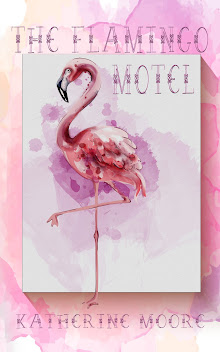 In an alternate Victorian England, a vampire woman and the
human man she comes to love investigate Jack the Ripper, who is killing vampire
prostitutes.
In an alternate Victorian England, a vampire woman and the
human man she comes to love investigate Jack the Ripper, who is killing vampire
prostitutes.
Newman’s novel is very ambitious. In addition to giving the Jack the Ripper
tale a new spin—and who doesn’t like Jack the Ripper stories?—the book turns
history on its ear, adding a potent element by adding a vampire police state storyline that results in anti-vampire riots and other
conflicts and clashes. Readers may be
reminded of the graphic novels of Alan Moore, which include both V FOR VENDETTA
and FROM HELL, also a Jack the Ripper tale.
There is also the relationship between Charles and Genevieve,
which has more nuance than the usual human/vampire interaction and is a lot
more grown-up. The characters here—and
there are a LOT of them—vary in stages of development but a lot of them are
really fine. It’s not necessary to know
that one character is real and another fictional in order to enjoy the
story. What we get is a feel for the
inhabited world, a Dickensian abundance of people (and vampires) who overflow
the pages and seem real.
In this novel, Dracula is a scary monster. That’s as it should be. He has charm and vampire glamour, but we know
that his intentions are dark and his ambitions are limitless.
Newman has worked out the world of the story in detail, from
the opening phonographic diary of Dr. Steward commenting on the arriviste
nature of the euro-trash vampires who have followed “the Prince Consort” to
London to the way Charles’ fiancée complains about no one getting ahead unless
they’re a vampire. (Humans are
“warms.”) The idea of Jack the Ripper’s
victims being vampire prostitutes is a clever one, and tells us just how
dangerous he is. The Diogenes Club has
the ring of a real institution and will remind readers of Vampire literature of
everything from Anne Rice’s all-seeing Talamasca to the real-life Victorian
“Hellfire Club” that was co-opted by the Marvel Comics universe as a group that
often comes in conflict with superheroes.
It helps to be familiar with the various aspects of the real
world that’s being turned on its head—to know who the Fenians were, for
example, or to know who Oscar Wilde was and why he represented a challenge to
the status quo. It’s not strictly
necessary, but it does make the read richer and more layered. You really, really have to love a book in
which fictional characters like Mina Harker share space with the Elephant Man,
Queen Victoria and George Bernard Shaw. The
period setting and the dazzling cast of real and fictional characters is like a
cross between urban fantasy and the novels of E. L. Doctorow. The mix makes for a great read.






No comments:
Post a Comment